|
|
General: SATURDAY NOVEMBER 12TH 1955 BACK TO THE FUTURE WHY? SPAIN (SAINT JAMES)?
Choose another message board |
|
Reply |
Message 1 of 32 on the subject |
|
|
|
|
|
Reply |
Message 18 of 32 on the subject |
|

 
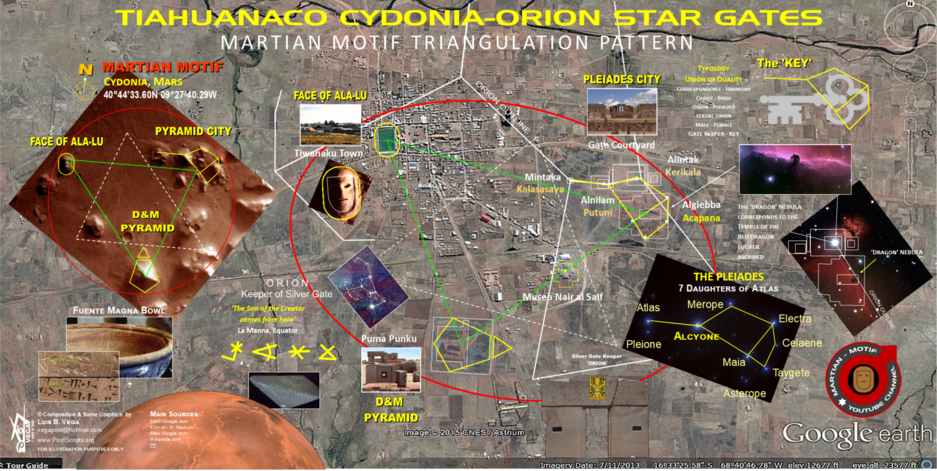  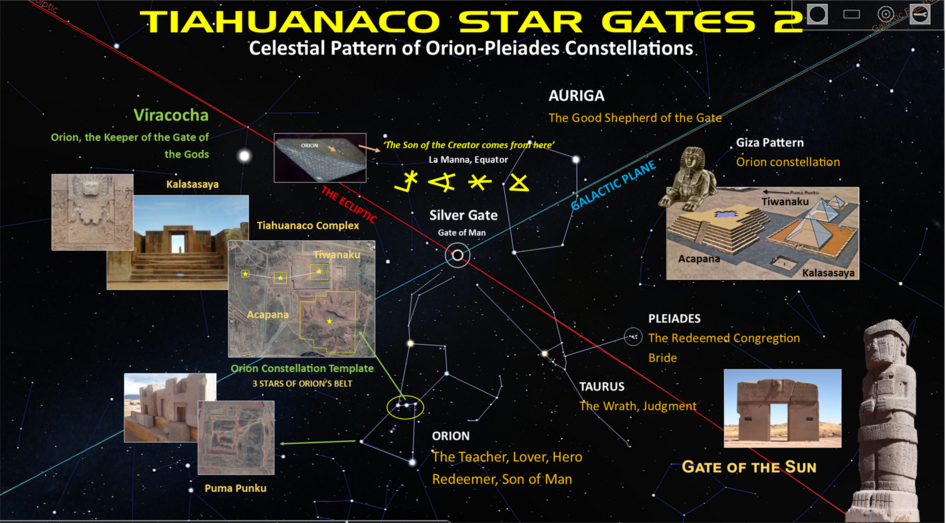 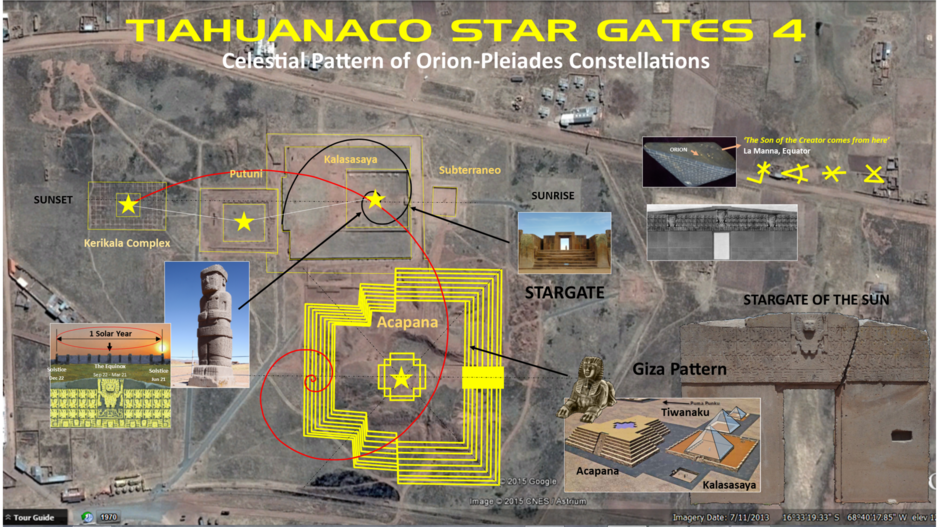 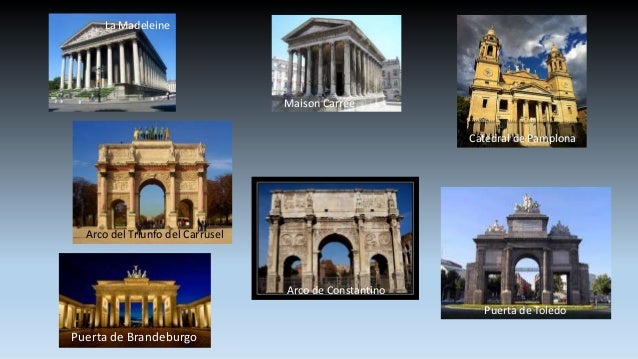
 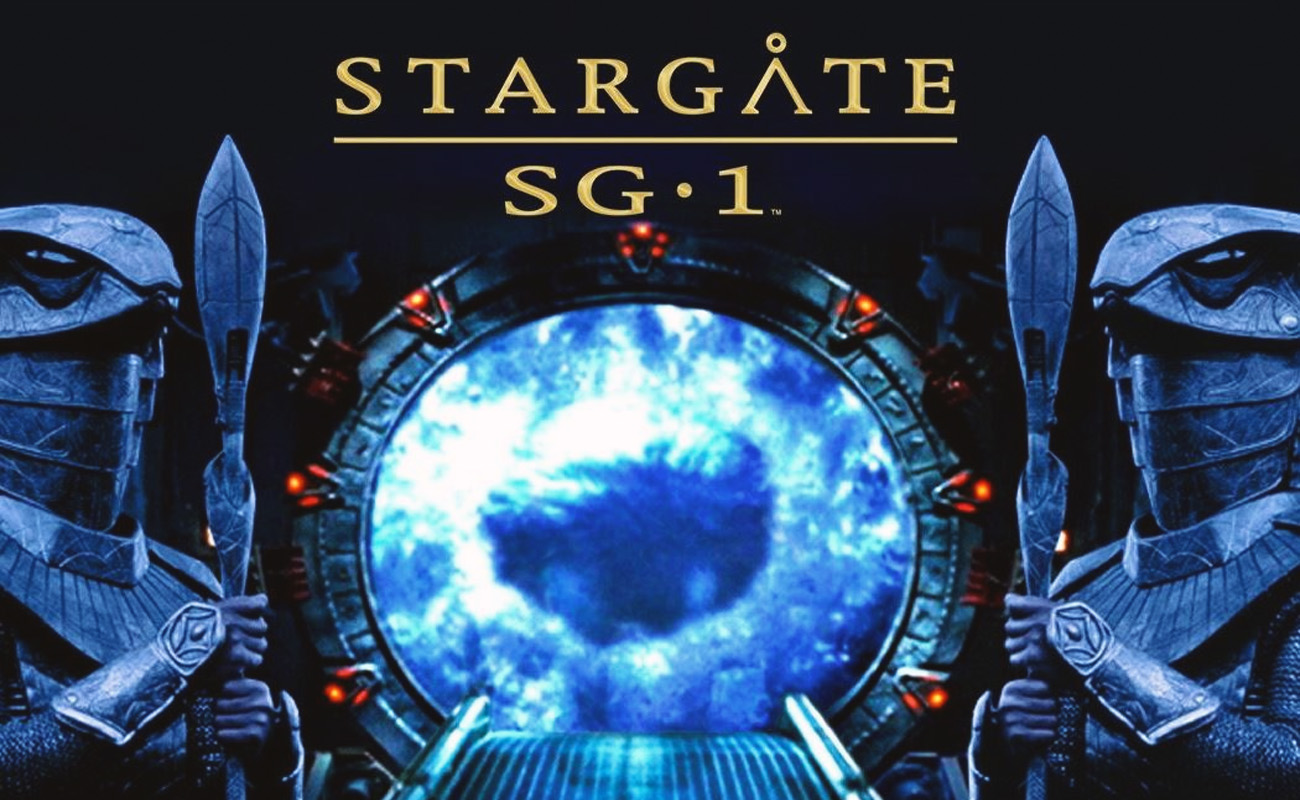 ![Stargate Special Edition [Reino Unido] [DVD]: Amazon.es: Kurt Russell: Películas y TV](https://m.media-amazon.com/images/I/51Gr2lgt03L.jpg)
LA SANGRE DEL CORDERO EN EL DINTEL, EN CONTEXTO AL EXODO PASCUAL, ES UN TIPO DEL GRIAL
1. Éxodo 12:7: Y tomarán de la sangre, y la pondrán en los dos postes y en el DINTEL de las casas en que lo han de comer.
2. Éxodo 12:22: Y tomad un manojo de hisopo, y mojadlo en la sangre que estará en un lebrillo, y untad el DINTEL y los dos postes con la sangre que estará en el lebrillo; y ninguno de vosotros salga de las puertas de su casa hasta la mañana.
3. Éxodo 12:23: Porque Jehová pasará hiriendo a los egipcios; y cuando vea la sangre en el DINTEL y en los dos postes, pasará Jehová aquella puerta, y no dejará entrar al heridor en vuestras casas para herir.
Dintel
De Wikipedia, la enciclopedia libre

Esquema de estructura adintelada.
Un dintel es un elemento estructural horizontal que salva un espacio libre entre dos apoyos. Es el elemento superior que permite abrir huecos en los muros para conformar puertas, ventanas o pórticos. Por extensión, el tipo de arquitectura, o construcción, que utiliza el uso de dinteles para cubrir los espacios en los edificios se llama arquitectura adintelada, o construcción adintelada. La que utiliza arcos o bóvedas se denomina arquitectura abovedada.
Los mejores exponentes de arquitectura adintelada en piedra son los edificios monumentales del Antiguo Egipto y la Grecia clásica. La palabra dintel proviene de la palabra latina: limitellus, que deriva etimológicamente de limen y limes. En latín la palabra limen significa umbral, puerta, entrada o comienzo, y limes se refiere a un sendero entre dos campos, límite o muralla.
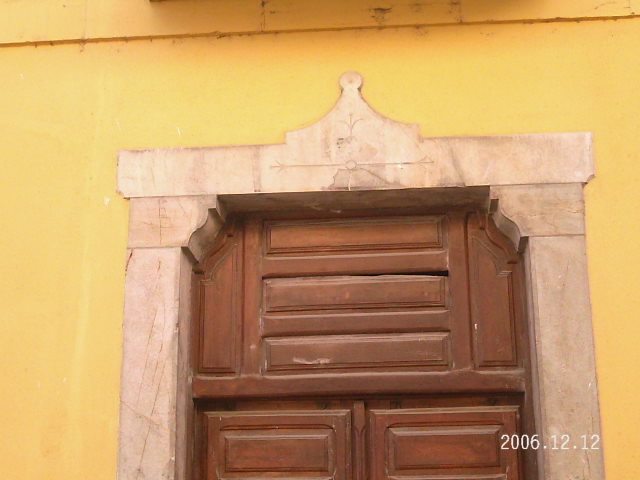
Comparen las dos figuras anteriores y noten que la LUZ SOLAR PENETRA, en este caso EN LA PUERTA DE TIWANAKU (BOLIVIA) en los equinoccios, osea el 20/21 de marzo y los 21/22 de septiembre. CONCRETAMENTE LA FIESTA DE LOS TABERNACULOS ES PRIMA HERMANA DE LA FIESTA PASCUAL. EN ESTE MARCO, INSISTO, EL SOL, SI USTED COMPARA CON LA FIGURA SUPERIOR, EN LOS MISMOS EQUINOCCIOS LA LUZ SOLAR CHOCA CON LA PIRAMIDE VATICANA E INCLUSO INGRESA O PENETRA ADENTRO DEL TEMPLO DE SAN PEDRO. PREGUNTO: ¿SI LA PLAZA DE MARIA DE LA VICTORIA ESTA UBICADA EN LA MISMA LINEA EQUINOCCIAL, QUIEN ES EN ESTE MARCO LA MISMA, EN EL CONTEXTO QUE LA PASCUA TAMBIEN TIENE ESA REFERENCIA? CUALQUIER PERSONA QUE TIENE TRES DEDOS DE FRENTE SE DA CUENTA QUE ES MARIA LA MAGDALENA. SI NO ES ASI PREGUNTO:
¿PORQUE CRISTO SE PRESENTO SIENDO VENCEDOR EL 17 DE NISSAN, OSEA EN EL EQUINOCCIO FRENTE A MARIA MAGDALENA?
CONCLUYO:
MARIA LA VICTORIA ES MARIA MAGDALENA
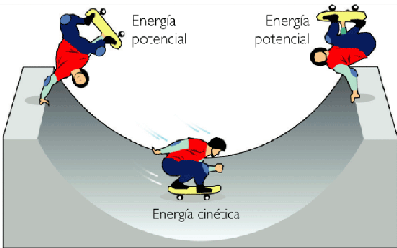
|
|
|
|
|
|
|
Reply |
Message 19 of 32 on the subject |
|
|
|
|
Reply |
Message 20 of 32 on the subject |
|
France’s Macron and Pope Francis hold unusually long meeting
Updated 26 June 2018
REUTERS
June 26, 201812:24
1277
- Macron and Pope Francis spoke for nearly an hour in the Vatican’s Apostolic Palace
- The two discussed “protection of the environment, migration, and commitment to conflict prevention and resolution"
VATICAN CITY: French President Emmanuel Macron, accused at home of straining France’s secular foundations by seeking to mend ties with the Catholic Church, had an unusually long and cordial meeting with Pope Francis on Tuesday.
They spoke for nearly an hour in the official papal library in the Vatican’s Apostolic Palace, about twice as long as Francis usually spends with heads of state or government.
A Vatican statement said the two discussed “protection of the environment, migration, and multilateral commitment to conflict prevention and resolution, especially in relation to disarmament.”
They also spoke about prospects for resolving conflicts in the Middle East and Africa and the future of Europe, it said.
At the end of the private part of the audience, Macron gave Francis a rare copy of Goerges Bernanos 1936 book “Diary of a Country Priest.”
“I’ve read this book many times and it has done me good. It is a book that I have always loved very much,” the pope told Macron, 40, who was accompanied in the public parts of the meeting by his wife Brigitte, 65.
Francis gave Macron a medallion depicting Martin of Tours, a 4th century saint who is depicted cutting his cloak in half to give it to a beggar in winter.
“This means the vocation of those who govern is to help the poor. We are all poor,” Francis told Macron as he was giving him the medallion.
As Macron left the library, he and Francis exchanged a two-cheek kiss, another very usually gesture between a pope and a visiting head of state.
The Vatican was expected to issue a statement later on the themes discussed during the private talks.
Two months ago, Macron called for stronger ties between the state and the Catholic Church, a move critics said blurred a line that has kept French government free of religious intervention for generations.
The issue is particularly sensitive in historically Catholic France, where matters of faith and state were separated by law in 1905 and which is now home to Europe’s largest Muslim and Jewish communities.
France’s guiding principles also hold that religious observance is a private matter, for all faiths.
Macron was raised in a non-religious family and was baptized a Roman Catholic at his own request when he was 12.
On Tuesday afternoon Macron was due to be installed as the “First and Only Honorary Canon” of the Rome Basilica of St. John’s in Lateran, which is the pope’s cathedral in his capacity as bishop of Rome.
Under a tradition that began in the 15th century when France was a monarchy, French leaders are automatically given the title.
https://www.arabnews.com/node/1328511/world |
|
|
|
Reply |
Message 21 of 32 on the subject |
|
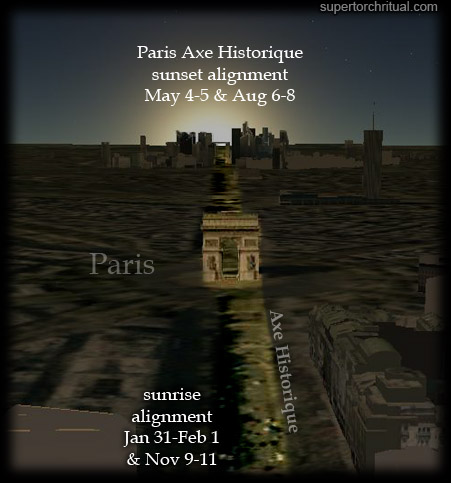

France’s Macron and Pope Francis hold unusually long meeting
Updated 26 June 2018
REUTERS
June 26, 201812:24
1277
- Macron and Pope Francis spoke for nearly an hour in the Vatican’s Apostolic Palace
- The two discussed “protection of the environment, migration, and commitment to conflict prevention and resolution"
VATICAN CITY: French President Emmanuel Macron, accused at home of straining France’s secular foundations by seeking to mend ties with the Catholic Church, had an unusually long and cordial meeting with Pope Francis on Tuesday.
They spoke for nearly an hour in the official papal library in the Vatican’s Apostolic Palace, about twice as long as Francis usually spends with heads of state or government.
A Vatican statement said the two discussed “protection of the environment, migration, and multilateral commitment to conflict prevention and resolution, especially in relation to disarmament.”
They also spoke about prospects for resolving conflicts in the Middle East and Africa and the future of Europe, it said.
At the end of the private part of the audience, Macron gave Francis a rare copy of Goerges Bernanos 1936 book “Diary of a Country Priest.”
“I’ve read this book many times and it has done me good. It is a book that I have always loved very much,” the pope told Macron, 40, who was accompanied in the public parts of the meeting by his wife Brigitte, 65.
Francis gave Macron a medallion depicting Martin of Tours, a 4th century saint who is depicted cutting his cloak in half to give it to a beggar in winter.
“This means the vocation of those who govern is to help the poor. We are all poor,” Francis told Macron as he was giving him the medallion.
As Macron left the library, he and Francis exchanged a two-cheek kiss, another very usually gesture between a pope and a visiting head of state.
The Vatican was expected to issue a statement later on the themes discussed during the private talks.
Two months ago, Macron called for stronger ties between the state and the Catholic Church, a move critics said blurred a line that has kept French government free of religious intervention for generations.
The issue is particularly sensitive in historically Catholic France, where matters of faith and state were separated by law in 1905 and which is now home to Europe’s largest Muslim and Jewish communities.
France’s guiding principles also hold that religious observance is a private matter, for all faiths.
Macron was raised in a non-religious family and was baptized a Roman Catholic at his own request when he was 12.
On Tuesday afternoon Macron was due to be installed as the “First and Only Honorary Canon” of the Rome Basilica of St. John’s in Lateran, which is the pope’s cathedral in his capacity as bishop of Rome.
Under a tradition that began in the 15th century when France was a monarchy, French leaders are automatically given the title.
https://www.arabnews.com/node/1328511/world
|
|
|
|
Reply |
Message 22 of 32 on the subject |
|
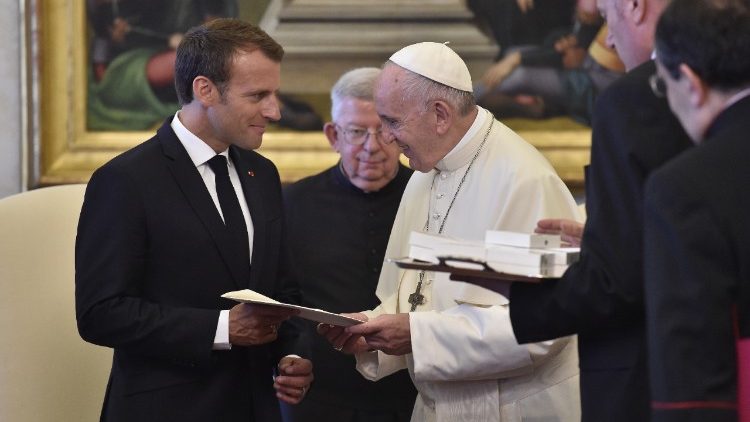 Pope exchanges gifts with French President Macron Pope exchanges gifts with French President Macron
Pope Francis meets French President Macron
At a private audience in the Vatican’s Apostolic Palace on Tuesday, Pope Francis and France’s president, Emmanuel Macron, exchange gifts and discuss the environment, migration, and disarmament.
By Devin Watkins
Pope Francis met on Tuesday with French President Emmanuel Macron, who later inherited the title of honorary canon of the Lateran Basilica. Macron was accompanied at the papal audience by his wife, Brigitte.
The Pope and the French president discussed protection of the environment, migration, and conflict prevention, according to a communique from the Holy See Press Office.
Their comments on global issues included the need for “multilateral commitment to conflict prevention and resolution, especially in relation to disarmament.”
Each one shared their views on conflicts in the Middle East and Africa, and reflected on the “prospects of the European project.”
Pope Francis and President Macron talked about how religions contribute to “the common good” of France, especially the Catholic Church’s commitment to bettering society.
Exchange of gifts
The two men exchanged gifts, with Pope Francis giving Macron, who was baptized a Catholic at the age of 12, a medallion of St. Martin of Tours, depicted cutting his cloak in half to give it to a beggar in winter.
President Macron gave the Pope a rare copy of Georges Bernanos’ 1936 book “Diary of a Country Priest”.
Afterwards, President Macron met with Cardinal Secretary of State Pietro Parolin and Archbishop Paul Richard Gallagher, Secretary for Relations with States.
Honorary Canon of Lateran Basilica
Later in the afternoon, Emmanuel Macron received the title “First and Only Honorary Canon” of the Basilica of St. John Lateran, the Cathedral of Rome.
French leaders automatically inherit the title of “Honorary Canon” under a tradition that dates back to the 15th century when France was a monarchy. Cardinal-elect Angelo De Donatis presided over the ceremony and conferred the title on President Macron.
https://www.vaticannews.va/en/pope/news/2018-06/pope-francis-france-president-macron-audience.html |
|
|
|
Reply |
Message 23 of 32 on the subject |
|
https://www.lanacion.com.ar/lifestyle/quien-fue-san-martin-de-tours-el-patrono-de-la-ciudad-de-buenos-aires-nid11112023/ |
|
|
|
Reply |
Message 24 of 32 on the subject |
|
|
|
|
https://victor-li.com/isabellaquarter/
Vindicated by History: The 1893 Queen Isabella Commemorative Quarter
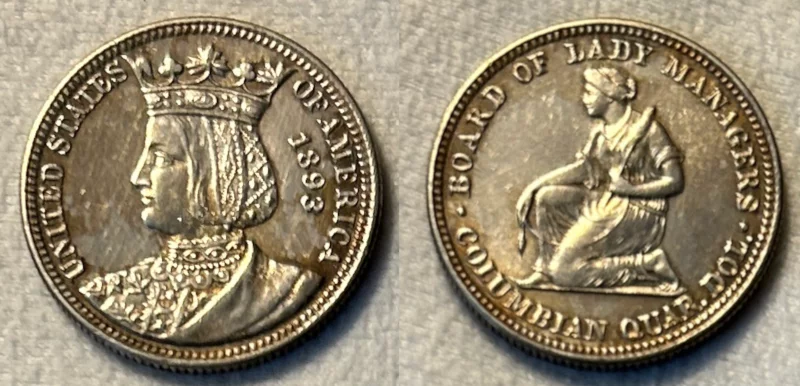
1893 Queen Isabella Commemorative Quarter. (Image via me)
A few things I’ve picked up from researching early commemorative coins:
- The people behind them always hope they can raise a ton of money for a pet project or monument or expo. They rarely do.
- The designs usually get denigrated by the numismatic press – oftentimes with a venom critics reserve for Limp Bizkit albums or Michael Bay movies.
- The mint melts down the excess/unsold coins. As a result, the ones that did sell end up becoming valuable decades later – screwing over collectors on a budget like yours truly.
Those issues were all in play for the 1893 Isabella Quarter.
The Queen Isabella commemorative quarter traces its beginnings to the World’s Fair: Columbian Exposition, held in Chicago in 1893. Congress had already authorized the minting of a commemorative half dollar featuring Christopher Columbus, but a group of women, led by Bertha Palmer, whose husband, Potter, owned the famed Palmer House hotel in Chicago, thought they could do better.
Spearheaded by renowned women’s rights activist, and future $1 coin subject, Susan B. Anthony, the Board of Lady Managers had been awarded $10,000 in federal funds to help manage the Columbian Expo. In early 1893, the Board went before the House Appropriations Committee to ask that the $10,000 could be paid to them in the form of 40,000 specially designed commemorative quarters, which they could then sell at a profit. Congress obliged and the Board set about becoming “the authors of the first really beautiful and artistic coin that has ever been issued by the government of the United States.”
Obviously, the Board wanted a female on the obverse and decided on Queen Isabella I of Castile, who had provided vital financial support for Columbus’s voyages. Putting a foreign monarch on U.S. currency was unprecedented (indeed, there had a been a revolution over it), but according to Coin Week, the main source of conflict was over design.
Caroline Peddle, a former student of famed artist and coin designer Augustus Saint-Gaudens, was hired by the Board to design the coin. However, her sketches, which included a seated Isabella on the obverse and the inscription “Commemorative coin issued for the Board of Lady Managers of the World’s Columbian Exposition by Act of Congress, 1492–1892” on the reverse, were deemed to look too token-like and rejected. Rather than be allowed to redesign the coin, the Mint took away the reverse side and gave it to one of their in-house artists, Charles Barber, to design.
After some more back-and-forth and additional restrictions imposed by the Mint, Peddle resigned. The Mint then cobbled together some portraits of Isabella and ultimately produced an image of a young Isabella wearing a crown on her head for the obverse. On the reverse, the Mint went with an image of a woman kneeling while holding a distaff and spindle- symbolizing her industry. The Board had suggested an image of the Woman’s Building at the Expo, and Palmer later stated that the Board disliked the Mint’s reverse image because “we did not consider [it] typical of the woman of the present day.” However, the Mint made the final decision and approved the coin design.
To say that the reception for the commemorative quarter was not warm is a bit like saying that the American public didn’t embrace Apple’s Newton. The American Journal of Numsimatics was particularly brutal:
[W]e do not know who designed it, but in this instance, as in the half dollar, the contrast between examples of the numismatic art of the nation, as displayed on the Columbian coins, on the one hand, and the spirited and admirable work of the architects of the buildings, for instance, on the other, is painful. If these coins really represent the highest achievements of our medalist and our mints, under the inspiration of an opportunity without restrictions, the like of which has never been presented hitherto in the history of our national coinage, we might as well despair of its future…
The American Journal of Numismatics in October 1893, quoted by PCGS.
The Journal also drew a “mournful” comparison between the reverse design of the kneeling woman holding the distaff and spindle and the well-known “Am I Not a Woman and a Sister?” anti-slavery Hard Times Token. Surely, the Board felt vindicated by that line – although there’s no evidence Palmer or anyone else affiliated with them ever wrote to the Mint to say: “See? I told you we should gone with the building on the reverse.”
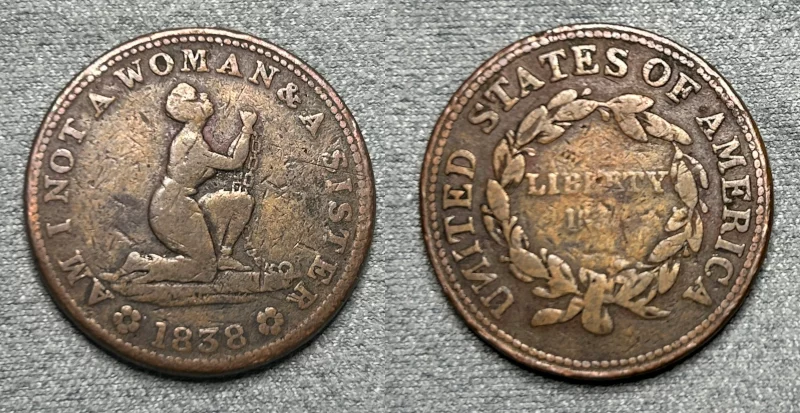 1838 HT-81 “Am I Not A Woman & A Sister?” (Image via me) Sales figures, meanwhile, were disappointing. Of the 40,000 coins minted, a little more than half (21,180) ended up selling. According to NGC, the quarter’s sales were cannibalized by the Columbian Expo half dollar, which sold for the same price and was more widely available at the fair (5 million Columbian Expo half dollars were minted – 125 times as many compared to the Isabella quarter). While it didn’t come close to selling out, Coin Week points out that the quarters, which sold for $1 each, ended up being profitable for the Board. A $20,000-plus stream of revenue may not have been much, but it was double the original federal appropriation awarded to the Board. Of the remaining 19,000-plus quarters, approximately 15,000 went back to the Mint for melting.
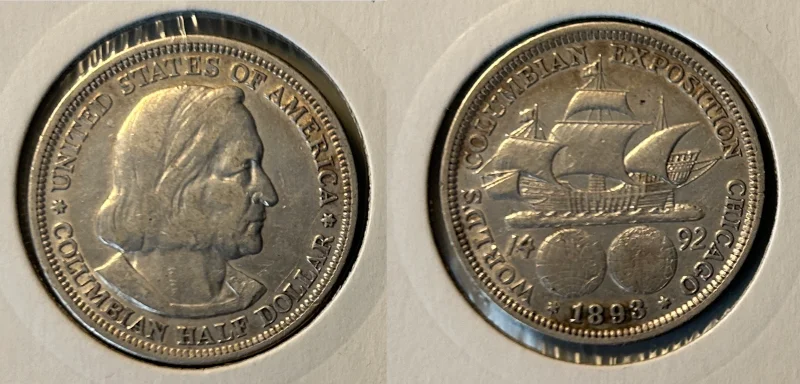 1893 Columbian Expo Half Dollar. (Image via me) In recent years, the coin’s reputation has been rehabilitated and has become a highly sought-after collector’s item. Contemporary reviewers have praised its quaint design and its uniqueness among U.S. commemorative coins (until the modern commemoratives came around, it held the distinction as the only commemorative quarter in U.S. history – as well as the only one to depict a foreign monarch). Even the reverse of the coin has been somewhat vindicated. Art historian Cornelius Vermeule argued that the design wasn’t necessarily evocative of the anti-slavery token and even traced elements of it back to antiquities. “[S]ome details of drapery to a servant girl from the East Pediment of the Temple of Zeus at Olympia, work of about 460 B.C. with additions and revisions in the first or second centuries A.D.,” he wrote.
I love the design and how it distinguishes this coin from other early commemoratives. Too many coins from that era have a generic male bust on the obverse and either an eagle or state symbol on the reverse. Because of the relative scarcity of this coin, buying one wasn’t cheap (this one had been cleaned, which lowered its value, but it still ended up costing over $100). The price tag was worth it, as this has become one of my favorite coins.
So I guess the lesson here is that I should buy more modern commemoratives – even those that I think are ugly. After all, maybe they’ll skyrocket in value in 100 years…
See Also:

In "The Coin Blog"

In "Politics"

In "Law"
https://victor-li.com/isabellaquarter/
|
|
|
|
|
|
|
Reply |
Message 25 of 32 on the subject |
|
|
|
|
Reply |
Message 26 of 32 on the subject |
|
Audiences get their first introduction to Marty McFly in the then-present day of 1985. It’s immediately clear the concept of time is a major factor in the film, as Marty, busy playing guitar at the errant Doc Brown’s home, realizes the numerous surrounding clocks are 25 minutes slow. He’s late for school, and a mad rush ensues to get to class. Later that day after school, Marty is asked for a donation to save the local clock tower, which was struck by a bolt of lightning during a terrible storm in 1955 at precisely 10:04 pm and never fixed.
That night, he meets the Doc at the Twin Pines Mall and is introduced to the time machine — a converted Delorean powered by plutonium. But when Doc is murdered by a group of Libyan terrorists out for revenge after being given a fake bomb in exchange for plutonium, Marty flees in the Delorean and accidentally sends himself back to 1955. This can be considered the Prime Back to the Future timeline and was ended thanks to Marty's actions in the past.
|
|
|
|
Reply |
Message 27 of 32 on the subject |
|
Notre Dame: The Da Vinci Fire
Written by Goro, April 15, 2019
A terrible tragedy in Paris today as we witness the destruction of Notre Dame Cathedral in a massive fire engulfing the whole structure. The entire world is transfixed by the surreal sight of such a beautiful historic building burning to the ground (almost).
This qualifies as a “Deep Impact” event. In Paris and on April 15…
…which means in this disaster we are also witnessing the latest instance of a multicontextual pattern we recognized beforehand (months in advance) getting fulfilled before our eyes. STR readers/members are fully aware of this.
Here is from “Super Bowl crystal ball” (premium article) published here on February 8th highlighting both “April 15” and “Paris”:
— [Excerpt from “Super Bowl crystal ball” (Feb 8, 2019)] —
The other key date/window telegraphed at the Super Bowl is mid April anchored by Patriots’ Day which is April 15th this year (originally April 19).
This can be inferred once again from the “MV” stage [in this year’s Super Bowl halftime show]:
[Where “Deep Impact” takes place (watch video)…]
Esoterically “M” is a shorthand for Mary Magdalene, and through whom the Holy Grail (the two are more or less interchangeable). Anyone who is familiar with the modern Grail mystery stemming from Holy Blood, Holy Grail would recognize the significance of the “M” symbol . The same goes for “V“, a vase-shaped letter alluding to the holy chalice.
By highlighting both “M” and “V” simultaneously, the Super Bowl was screaming“Holy Grail” as well as “The Da Vinci Code“…
…which directly tells the reader/viewer about the “V” (Grail) shape in Leonardo’s Last Supper…
…which is also part of an “M” shape made by Jesus and “Mary Magdalene” next to him (though officially “John”).
The other world-famous Leonardo masterpiece on the cover of The Da Vinci Code, the Mona Lisa, is currently in the Louvre museum in Paris at the eastern end of the Axe historique…
…exactly where “symbolist” Robert Langdon ends up locating the body of Mary Magdalene – the Holy Grail – buried right under the glass pyramids in The Da Vinci Code.
As I pointed out recently the Feb 3 Super Bowl coincided with the Paris axis’s sunrise alignment in the direction of the Louvre or in the direction of the Mona Lisa.
Extended westward the axis pinpoints Houston and Corpus Christi (“Body of Christ” i.e. Holy Grail) in Texas. The other major axis called the Champ de Mars where the Eiffel Tower stands pinpoints Los Angeles home to the Los Angeles Rams who played in the Super Bowl…
…and lost to the New England Patriots who in turn also resonate with The Da Vinci Code thanks to this year’s Patriots Day falling on April 15 which happens to coincide with… Leonardo da Vinci’s birthday!
Combined with April 19/Good Friday/original Patriots’ Day already considered significant even before the Super Bowl…
Jan 27 Sacrifice for Atlantis?
Jan 31 Sacrifice for Atlantis? – Part 2
Feb 01 Super alignments
…we can definitely sense an energy spike around mid April.
— [End excerpt from “Super Bowl crystal ball“] —
And here we are, on April 15th, seeing any “energy spike”? Right inside Paris? Both time and location pinpointed beforehand.
Our recent updates in the past few days had specifically noted the intensification of this very pattern:
Apr 12 Spacetime canal
Apr 12 Lucifer’s Stargate – Part 2
Apr 13 Whispers Through Stargate
Note that the Super “V” (Maroon V’s Super Bowl stage)…
…also evoked the Virgin (Mary) as in “Our Lady” or “Notre Dame“.
“Virginia” also expressed just days ago…
Twice. (The first-ever image of a black hole located in constellation Virgo the Virgin.)
So on and so forth.
It’s only through such accurate predictions that we can demonstrate the reality of otherwise “impossible” multicontextual patterns or synchronicities we deal with here on Super Torch Ritual day in and day out. And we do this regularly unlike anyone else out there. Super Torch Ritual is the only website of its kind that crosses the “event horizon” like this all the time, making time non-linear and demonstrating its reality for all to see.
Apr 12 Spacetime canal
Apr 12 Lucifer’s Stargate – Part 2
Apr 13 Whispers Through Stargate
The pattern is not done yet. It has more “destinations”… Gulp.
https://www.supertorchritual.com/notre-dame-the-da-vinci-fire/ |
|
|
|
Reply |
Message 28 of 32 on the subject |
|
Being the brightest star in the night sky, Sirius certainly qualifies as a "great star". It "burns" in the sense that the name "Sirius" means "scorcher" plus the phrase "Dog Days of summer" derives from Sirius's nickname "Dog Star". Even the "seven days" (sept jours) part relates to Sirius in that ancient Egyptians called the star Spd, Spdt, or Sept, resonating with the French sept meaning "seven. ("Seven days" can also allude to the 7-day festival Saturnalia, Dec 17-23.)
Saturnalia (Dec 17-23) was another important window we were watching very closely... (Saturnalia starts on Pope Francis's birthday, by the way.) My tweet from Nov 24:
|
|
|
|
Reply |
Message 29 of 32 on the subject |
|
Town Theater in 1955 at night.
- "Continuing past the Studebaker lot, he [Marty] stopped in front of the Town Theater, a marvelously typical piece of art deco from the 1930s. A basic tan-colored tower rose above its green marquee and red tile entrance, which was lined with display shots of its current attractions, The Atomic Kid, starring Mickey Rooney and Robert Strauss."
- —From Back to the Future by George Gipe (page 85)
- "Well, would you look at that! The old Town Theater!"
- —Emmett Brown
The Town Theater was a movie theater in Hill Valley in 1931-1955.
History
The Town Theater in 1931
Note: The following section is considered non-canon or is disputed in canonicity.
On the evening of August 25, 1931, Arthur McFly came to watch a showing of Frankenstein. A young Emmett Brown later went to the theater to watch the same movie, which further inspired him in his career in science (though a change in his timeline prevented him from going to the theater).
The movie was still playing in the theater as of October 12, 1931 and was viewed three times by a time traveling Citizen Brown.
In the 1971G timeline, it was ordered by Edna Strickland that the theater be torn down as she felt movies corrupted the younger generation.
Non-canon or disputable information ends here.
On both November 5 and November 12, 1955, the Town's featured attraction was the 1954 film, The Atomic Kid, starring Mickey Rooney. By November, the film had been out for almost a year.
By 1985, the downtown theater had stopped showing movies and had become the gathering place for the Assembly of Christ church in Hill Valley. While the Town Theater had become a house of worship, its rival, the Essex Theater, had become an X-rated movie house by 1985.
Young Emmett Brown and Edna Strickland walking in front of the Town Theater in 1931A.
On November 12, 1955, Marty McFly drove the DeLorean time machine at 88 miles per hour toward the entrance of the Town Theater, hoping to make connection with a lightning-charged wire and to go back to the future, rather than colliding with the theater. Although it was a Saturday night, the theater had apparently closed for the night by 10:04 that evening. The collision with the building would not happen until nearly thirty years later, when Marty skipped across the intervening decades.
On October 26, 1985, at 1:23 in the morning, Marty McFly crashed into the front of the Town Theater at the speed of almost 88 miles per hour, knocking down the entrance and part of the front wall. Miraculously, Marty was uninjured in his collision with the Assembly of Christ building, and even the DeLorean was unscathed.
Appearances
https://backtothefuture.fandom.com/wiki/List_of_Hill_Valley_streets
|
|
|
|
Reply |
Message 30 of 32 on the subject |
|
- "Ladies and gentlemen, as mayor of Hill Valley, it gives me great pleasure to dedicate this clock to the people of Hill County. May it stand for all time!"
- —Mayor Hubert, September 5, 1885
Marty looks up at the courthouse clock in 1955.
The Hill Valley Courthouse and Clock Tower, also known as the Hill County Courthouse was a structure in Courthouse Square in Hill Valley, California.
Description
Hill Valley Courthouse
The Hill Valley Courthouse and clock tower were of a common construction and architectural style seen across the United States in the 1800s and 1900s. It was composed of red brick, concrete, and white trim. Two black cougar statues flanked the clock. The clock dial used "IV" for the number four, instead of "IIII" which is usually found on clocks with Roman numerals (except for Big Ben in London). On each quarter hour, the clock would chime.
History
The courthouse underwent several changes over the course of its 130-year history. It was first constructed in 1885. On September 3, 1885, it almost experienced its first hanging by Buford Tannen before Dr. Emmett Brown intervened. A ceremony held during the September 5th Hill Valley Festival started the clock at 8:00 pm. It would be completed the following year alongside the Shonash Ravine Bridge project.
From the 1880s until at least the 1950s, the building was the county courthouse with a lush lawn with walking paths that led from the building to the corners of the block.
Note: The following section is considered non-canon or is disputed in canonicity.
The courthouse was used as a shelter during the San Francisco Earthquake during 1906.[1]
Up until some point in 1929, there was a ladder leading up to the top of the Courthouse, but it was removed due to some jumping incidents.[2]
In 1931 when Emmett was 17 he worked at the courthouse as a junior clerk with his father as the judge at the time. Also before Marty McFly went back to June 13, 1931 to find him while he was in Edna Strickland's apartment he sees a picture of him dead on the steps of the courthouse in a newspaper (while looking for the date that he was stuck in back in the past).
On August 25, 1931, Einstein was stranded on the roof of the Courthouse after riding Emmett's rocket-powered car. He was saved by Doc shortly after.
On October 12, 1931, Emmett was sulking at the top of the Courthouse. After a lightning strike, he got tangled on a rope tied to the statue, only to be saved by Marty. On the night after, Marty would run into Arthur McFly and Trixie Trotter before leaving 1931.
Shortly after discovering Doc's grave in 1955, the duo head to a library containing historical documents which by a large establishing shot, holds a large resemblance to the inside of the courthouse [Back to the Future 3, 15 minutes and 15 seconds in]. The space is fronted by three stories of windows similar to the placement, shape, and style of the windows on the façade of the courthouse. The marble floored atrium is flanked by two wood trimmed stairwells leading to halls on either side. The library sits in the middle. If this is indeed the courthouse, it is one of two times the main interior is shown in the movies [Back to the Future 2, 20 minutes and 58 seconds in].
Non-canon or disputable information ends here.
The clock tower was struck by lightning during an electrical storm on November 12, 1955. This fused the clock's internal mechanism and had stopped the clock at 10:04 pm permanently. Despite efforts trying to repair or replace the damaged clockwork, the Hill Valley Preservation Society kept it in this condition as part of the town's history and heritage. Though the courthouse's lightning rod could provide sufficient electrical grounding to absorb lightning strikes, it had completely severed. Originally, the tower was simply struck by lightning and the clock rendered useless, but after Marty visited 1955, a experiment involving hooking a cable up to the antenna was created by Doc to send Marty back to the future.
Over time, many unsuccessful efforts were put into place to replace the clock tower from the current mayor in office.
In 1985, the Department of Social Services occupied the building, and the lawn had been replaced by a parking lot.
In 1985A, the courthouse had been turned into Biff Tannen's Pleasure Paradise Casino & Hotel, with over twenty-seven floors. This was undone in 1985B after Marty burned the Grays Sports Almanac in 1955 using a matchbook he had taken from the Pleasure Paradise.
Note: The following section is considered non-canon or is disputed in canonicity.
In an alternate 1986 where Hill Valley is a repressed dystopia, the clock tower has become Citizen Brown's monument to cold efficiency and order. Marty crashes the DeLorean into a billboard showing Citizen Brown embracing the clock tower. Brown's office is located in the room directly behind the clock face. In this timeline the clock is actually functioning, meaning that in this timeline, First Citizen Brown promptly repaired the damage done by the lightning strike in order to maintain his symbol of efficiency.
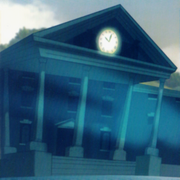
The new clock tower in 1990.
In 1990, in the revised timeline, a new clock was installed on the Hill Valley Courthouse, despite efforts from the Hill Valley Preservation Society.
Non-canon or disputable information ends here.
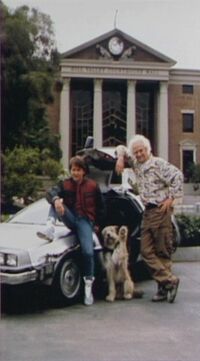
The 2015 courthouse and its large, futuristic-looking darkened windows form the background of this publicity shot of Michael J. Fox, Christopher Lloyd and Freddie posing with the DeLorean time machine on the set of Back to the Future Part II.
In 2015, in the original timeline, the courthouse had large darkened windows at the front and had become a shopping mall with underground shops with a lush garden and a decorative pond in the courtyard. The clock, however, was still non-functional after sixty years. On October 21, Griff Tannen and his gang were chasing Marty through the town square on hoverboards, believing him to be his future son Marty Jr. They ended up crashing into the building, which resulted in the gang being arrested and thus preventing the robbery that would've put Marty Jr. in jail.
Gallery
The Clock Tower gets hit by lightning at 10:04 p.m. on November 12th, 1955.
|
|
|
|
Reply |
Message 31 of 32 on the subject |
|
Vézelay, Saint Maximin and the relics of Mary Magdalene

Vezelay and Saint Maximin, an incredible “war” for the relics of Mary Magdalene
Mary Magdalene did not immediately have a great aura in the history of the Church. It was not until the 7th and 8th centuries that she began to be favored in monastic circles, where the accent was placed on repentance and forgiveness by welcoming sinners there. The life of the saint – a sinner who became an ascetic – then merges with the traditions concerning the life of Mary the Egyptian. She was a prostitute of the six century who would have done penance in the desert, on the other side of the Mediterranean.
In the 11th century, the monasteries, under the influence of the order of Cluny, took on social and economic importance. There is also a tremendous cult around all kinds of relics brought back from the Holy Land or purchased in Constantinople. Having relics of great saints is important at this time. It is because there are relics that pilgrimages are organized and pilgrimages pay off. In Vézelay at the beginning of the 11th century the monastery was in full decline. Wishing to promote his abbey, Abbot Geoffroy (1037-1052), friend of the pope, ambitious and close to princes “discovered” (“invented” is the term of use) and exhibited the relics of Mary Magdalene. Pilgrims flock.
 Relic of Mary Magdalene, Vezelay basilica In 1050 Mary Magdalene officially became the patron saint of Vezelay abbey.
Over the 11th and 12th centuries, the abbey, many times enlarged and rebuilt, was transformed into a magnificent sanctuary, with splendid Romanesque portals. It was an important stopover on the way to Compostela. The city took advantage of the influx of pilgrims. In the 12th century, its population amounted to 10,000 inhabitants, a considerable number for the time. Vézelay then became a center of great importance for the West.
Under the protection of the powerful dukes of Burgundy, in 1146, Saint Benedict preached the second crusade there. King Louis VII, Queen Eleanor and a crowd of nobles, prelates and people gathered on the hill.
In 1190, Richard Coeur-de-Lion and Philippe-Auguste met there at the start of the third crusade.
In 1217, François d’Assise chose the hill of Vézelay to found the first Franciscan establishment on French soil.
 Saint Bernard preaching the 2nd Crusade, in Vézelay, in 1146, Émile Signol – Public domain How the relics of Mary Magdalene arrived in Vézelay ?
Natural curiosity, but unsatisfactory answers.
We accepted the idea that it was Gérard de Roussillon who would have organized the transfer of the relics during the foundation of the abbey, relics that we would have gone to look for in Saint-Maximin where we knew that the saint had her burial. .
The bishop of Autun launched a prohibition against the pilgrimage. We then asked for the arbitration of the Pope. Pascal II, who by a bull given in 1103, broke the prohibition of the bishop and invited all the French to make the pilgrimage of Vézelay. The pilgrimage then took off, these were the great hours of Vézelay.
However, doubt persisted, not about the burial of Mary Magdalene in Provence, but about the transfer of her relics to Vézelay and their authenticity. We didn’t have much to show as relics in Vézelay, where we talked about them a lot without ever really presenting them in public.
“Presentable” and “indisputable” relics were needed. It was then that in 1265, relics were exhumed in Vézelay, kept in a box which would have been deposited in the crypt in 920 more than three centuries earlier. A certificate of authenticity in the box proves this!. “…under the high altar, a metal chest, long square, which contained some relics wrapped in two veils of silk, with a certain quantity woman’s hair”. There was also a letter from a King Charles certifying that “in this coffer is contained the body of the blessed Mary Magdalene”. (Act drawn up by Gui de Mello, bishop of Auxerre and Pierre, bishop of Panéade.)
Saint Louis officially recognized the relics and went to Vézelay for their elevation in 1267.
 Vezelay basilica  St Maximin basilica
Nevertheless, the doubt still persisted.
Twelve years later, in 1279, Charles II, Prince of Salerno, nephew of Saint Louis, who had come to Saint-Maximin on pilgrimage and had carried out a solid investigation, was convinced that the tomb of Mary Magdalene was in the crypt. where Saint Maximin had once buried her.
He organized excavations which led to the discovery of several sarcophagi. In the so-called “Sidoine’s sarcophagus” was discovered the body of Mary Magdalene with an inscription on a wooden tablet on which appeared simply: “Here lies the body of Saint Mary Magdalene.”

And finally, for the Abbey of Vézelay, the miracle will not take place.
Indeed, Pope Boniface VIII definitively put an end to this “battle” between the 2 cities when he recognized the authenticity of the relics discovered by Charles II at Saint Maximin.
Vézelay will have to submit to the spiritual authority of the Pope. At the end of the 13th century, it is the beginning of the decline of the pilgrimage of Vézelay.The reliquary in the crypt of Vezelay contains a piece of her rib bone, given by the Dominican monks of St Maximin.
https://www.magdalenesacredjourneys.com/vezelay-saint-maximin-and-the-relics-of-mary-magdalene/ |
|
|
|
Reply |
Message 32 of 32 on the subject |
|
Dog Days Prophecy
Sirius, Regulus, Super Bowl, financial crises, earthquakes & August 2015 Lucifer time codes
By Goro
August 02, 2015
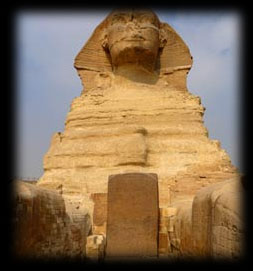
[Great Sphinx aka "Father of Terror"]
[NOTE: Yes, the global stock market chaos of August 2015 was predicted with precision in this article (posted on Aug 2, 2015) as you'll see below or in the new article When Prediction Comes True.... If you're new here, this is not a fluke as this is what I do on my websites (Etemenanki & STRUG). You may find the approach baffling, but you can't argue with this kind of unambiguous results. Key parts of this information was originally posted all the way back in February on STRUG (members only).]
Terror was the opening music for the year 2015, potentially foreshadowing what may transpire in August...

Our job here is to discern and decode a set of "time codes" lurking just below the surface of reality which in this case is celestially anchored by two stars: Sirius and Regulus.
Sirius is the star of Isis per ancient Egyptian tradition, and Paris ("Par-Isis") is semi-officially a city of Isis-Sirius where we find the Historical Axis (including the world-famous Champs Elysees boulevard) oriented toward the daily rising of Sirius.
The same axis happens to align with the sunset on August 6–8...

…as well as May 4–5 which this year gave us highly meaningful events already:


The Historical Axis also aligns with sunrise around February 1 (& Nov 9–11). This one coincided with the Super Bowl where Katy Perry did her halftime show in Phoenix this year.

On STRUG ("Super Torch Ritual Underground" members/underground area) I noted back in February that University of Phoenix Stadium (Super Bowl 2015) has some serious Sirius alignments...


...plus the fact that at the latitude of Phoenix (~33.45 N) the heliacal rising of Sirius takes place around August 7th, precisely coinciding with the Paris axis-sunset alignment day.

(The heliacal rising of Sirius is the "rebirth" of the star at dawn right before sunrise after a prolonged period of invisibility in the glare of the Sun; in ancient Egypt this was of great importance as it was for a period of time a signal for the life-giving annual flooding of the Nile, and also due to the general importance of the star and the goddess it represents, Isis.)
https://www.goroadachi.com/etemenanki/dogdays_prophecy.html |
|
|
 First First
 Previous
18 a 32 de 32
Next Previous
18 a 32 de 32
Next
 Last
Last

|
|
| |
|
|
©2025 - Gabitos - All rights reserved | |
|
|


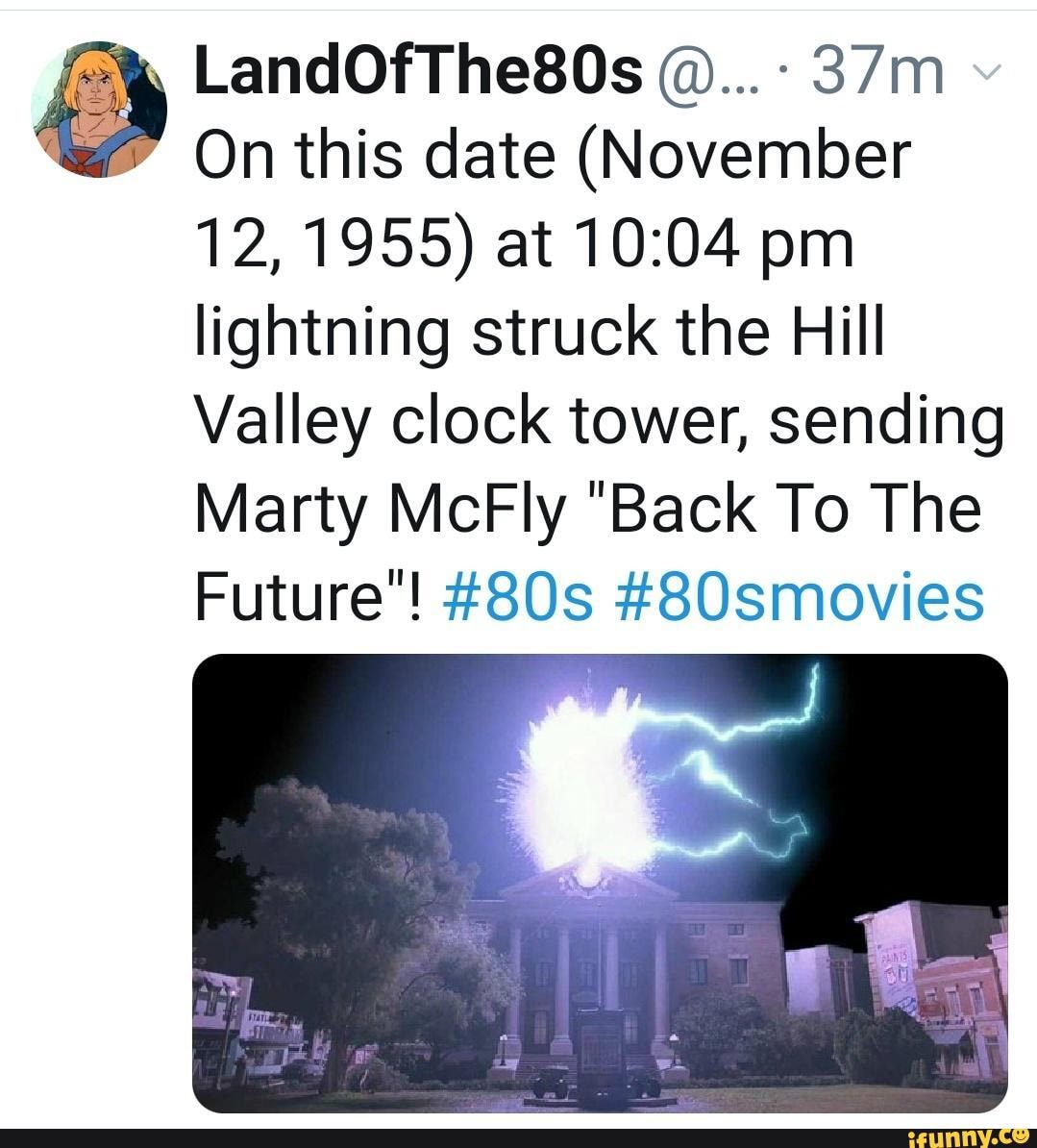

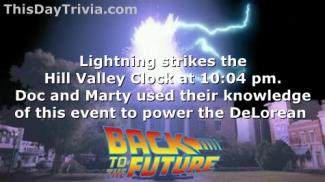






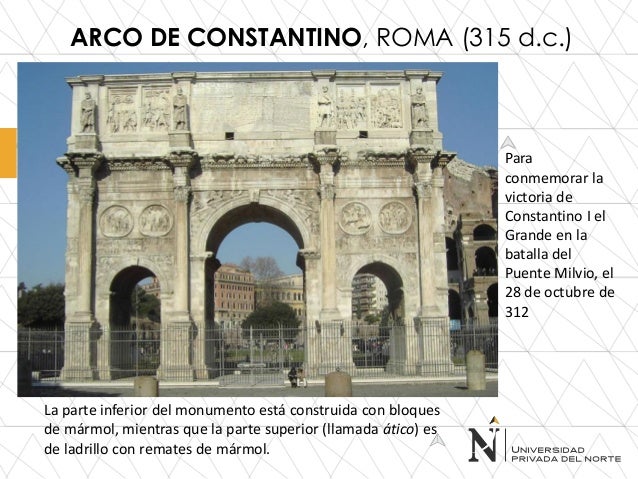


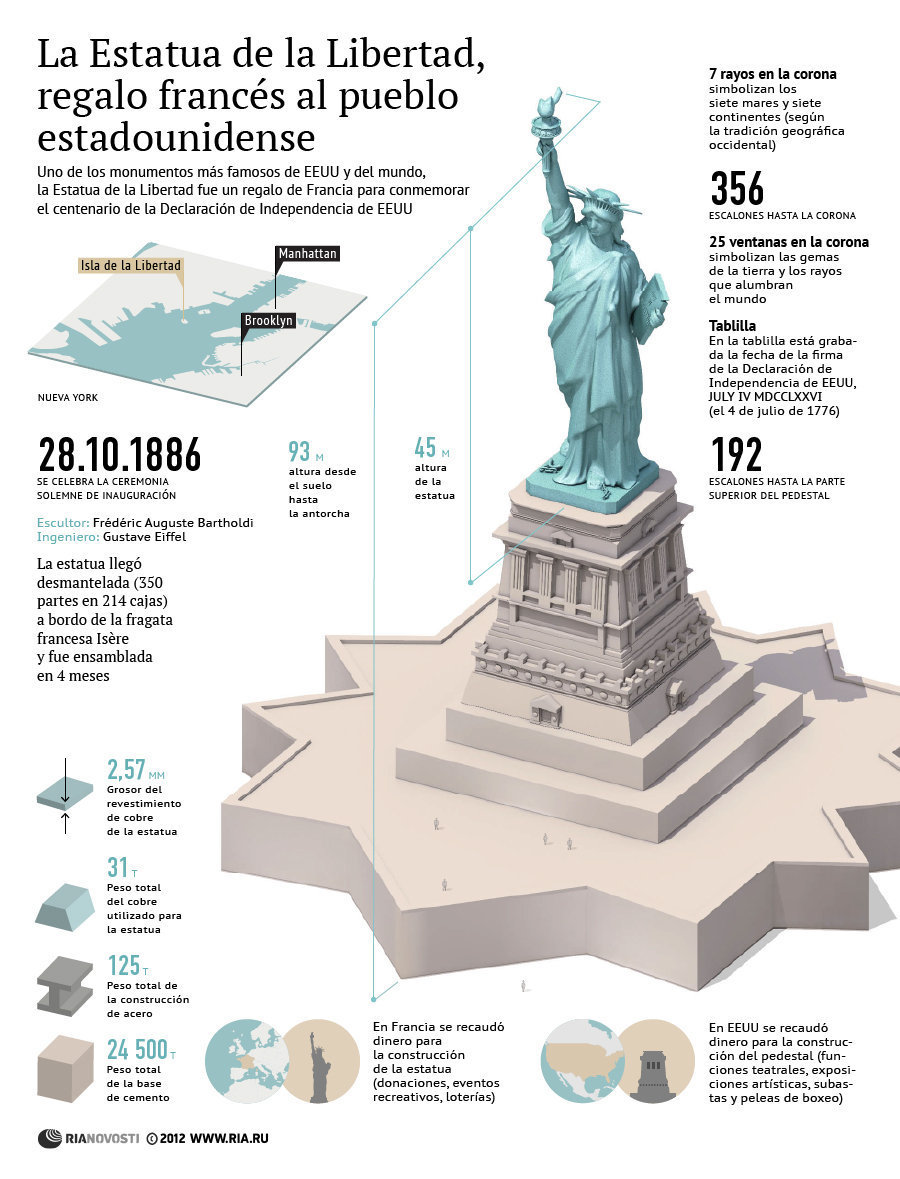
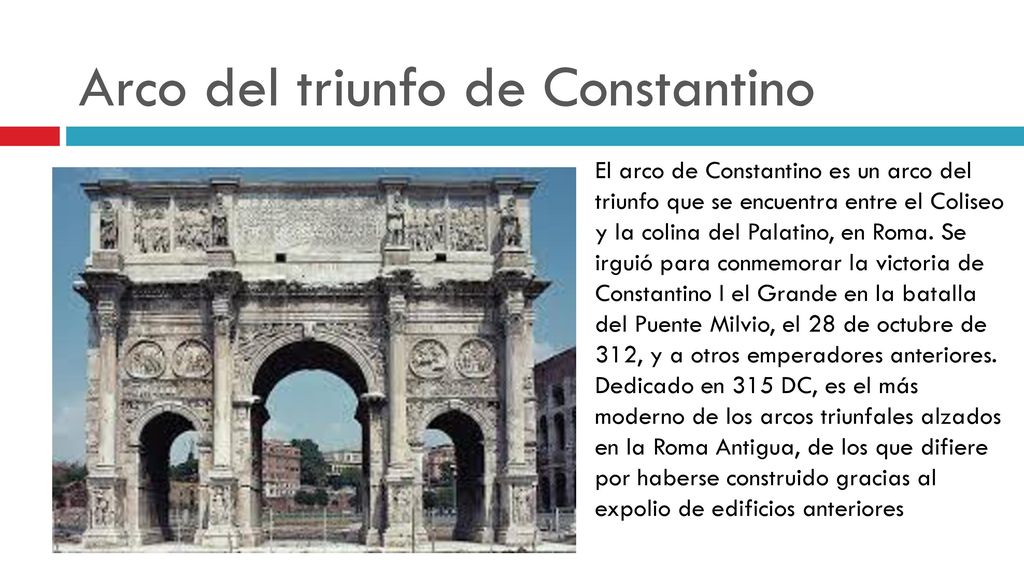

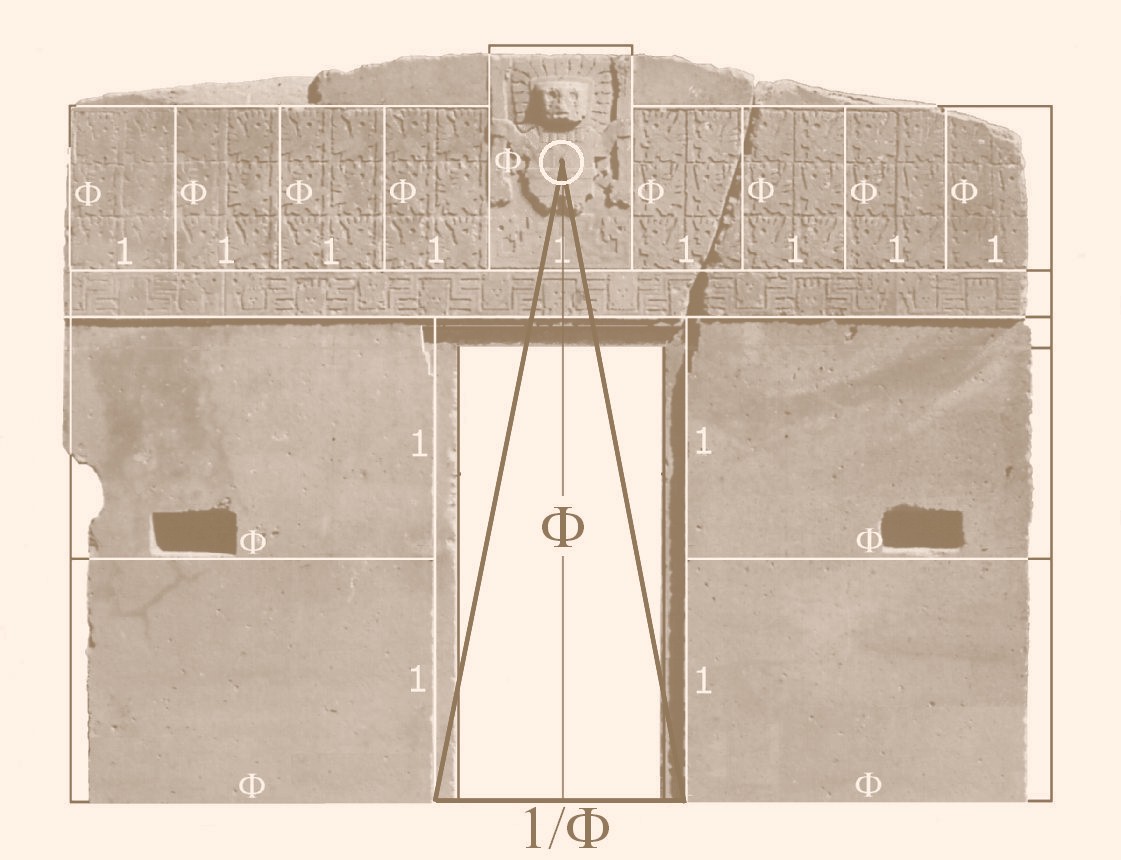



![Stargate Special Edition [Reino Unido] [DVD]: Amazon.es: Kurt Russell: Películas y TV](https://m.media-amazon.com/images/I/51Gr2lgt03L.jpg)
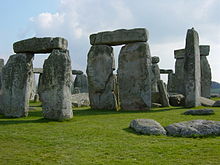









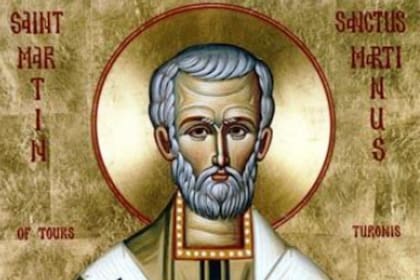


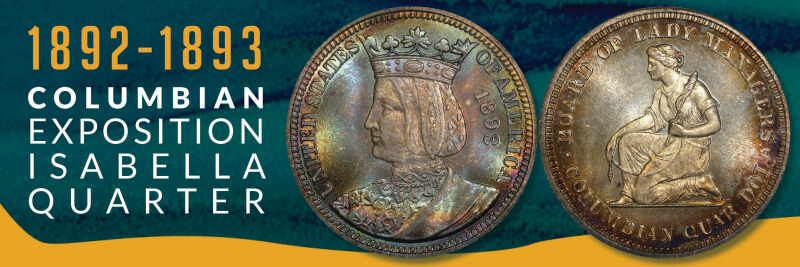

 1838 HT-81 “Am I Not A Woman & A Sister?” (Image via me)
1838 HT-81 “Am I Not A Woman & A Sister?” (Image via me) 1893 Columbian Expo Half Dollar. (Image via me)
1893 Columbian Expo Half Dollar. (Image via me)


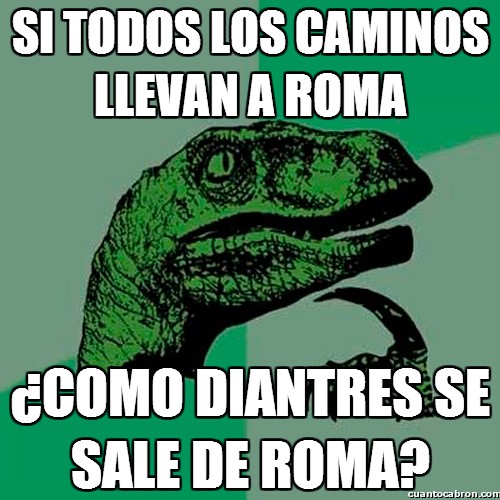

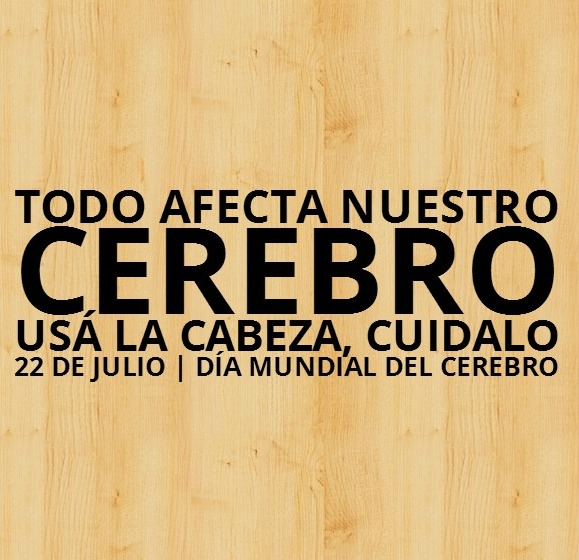



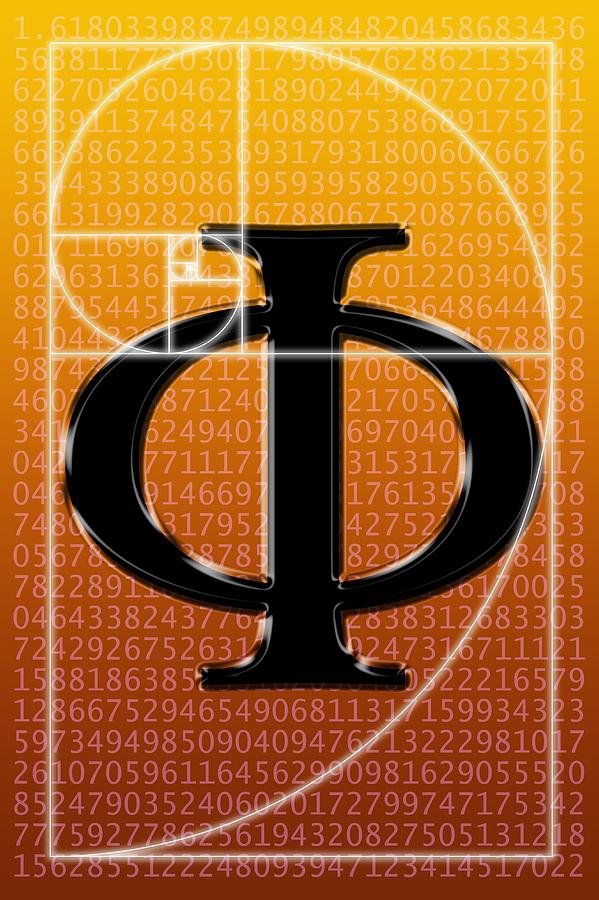
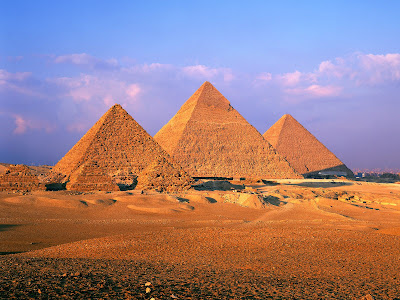

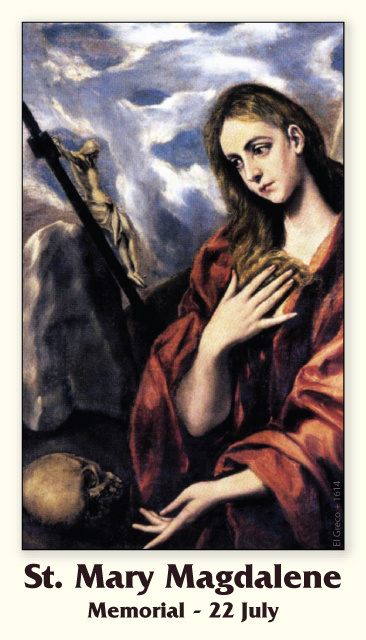







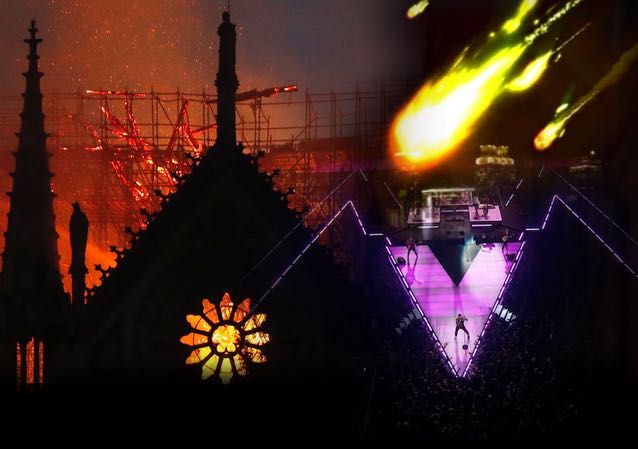
 April 15
April 15 












 Apr 08
Apr 08  Apr 10
Apr 10 



 Relic of Mary Magdalene, Vezelay basilica
Relic of Mary Magdalene, Vezelay basilica Saint Bernard preaching the 2nd Crusade, in Vézelay, in 1146, Émile Signol – Public domain
Saint Bernard preaching the 2nd Crusade, in Vézelay, in 1146, Émile Signol – Public domain Vezelay basilica
Vezelay basilica St Maximin basilica
St Maximin basilica








